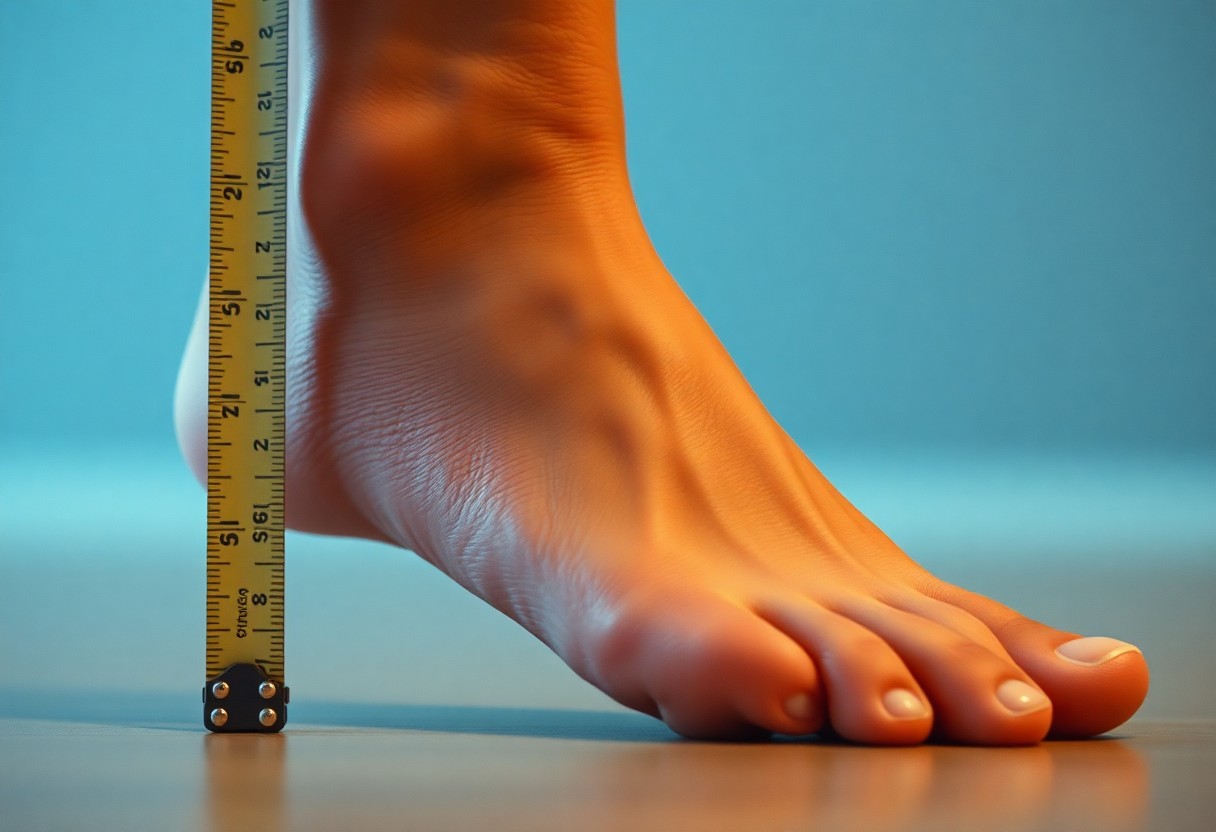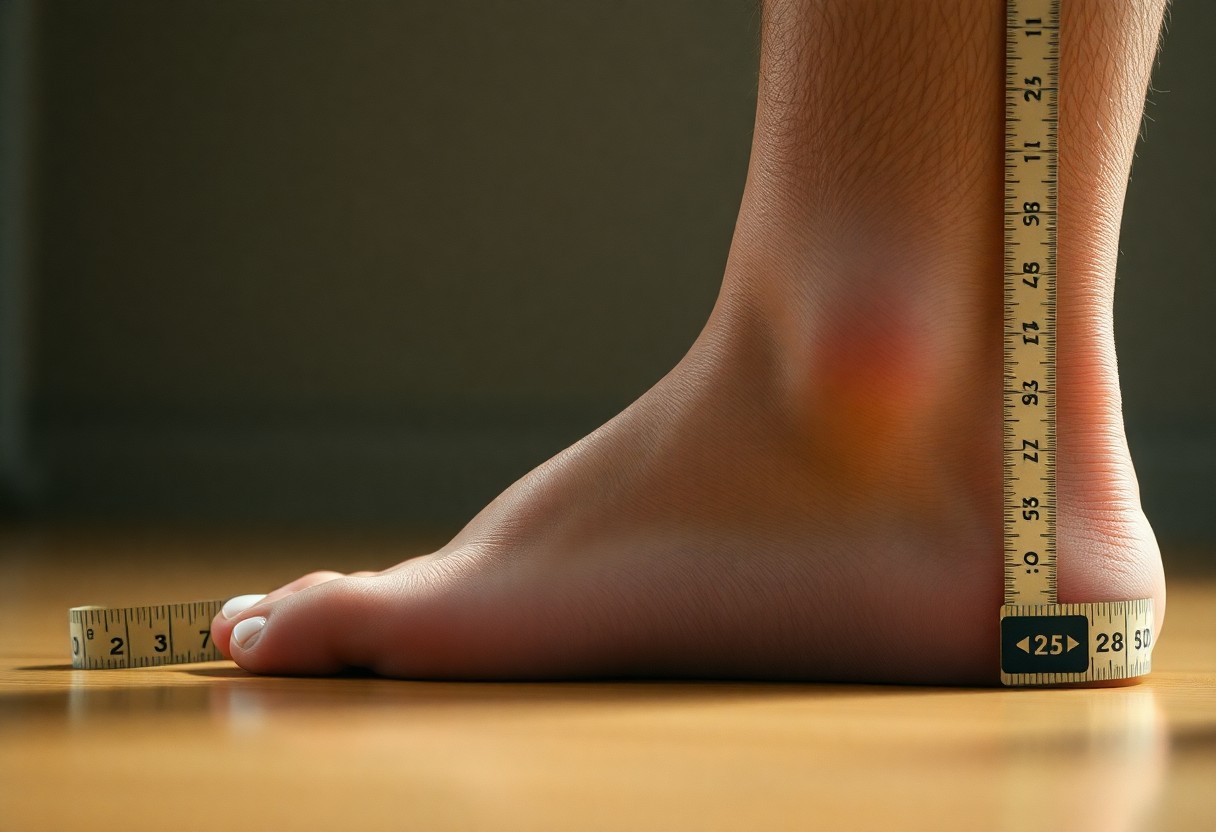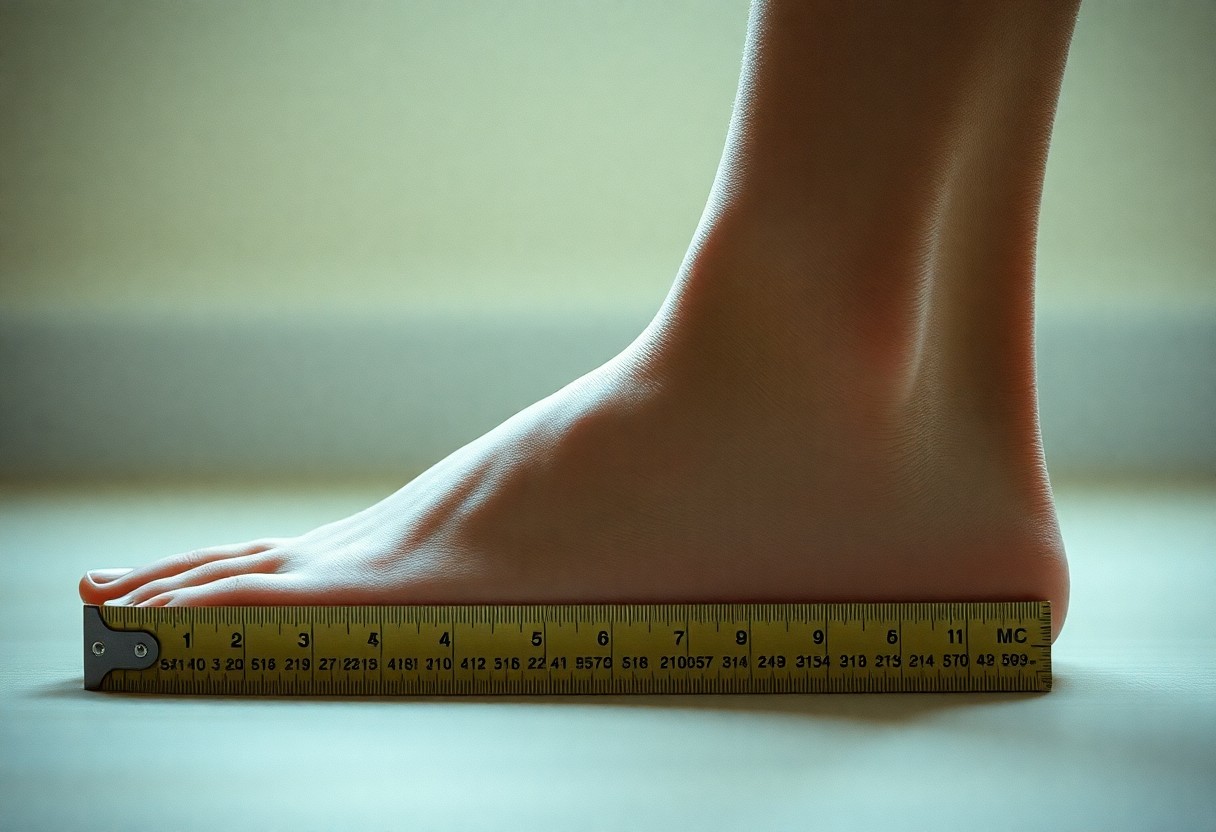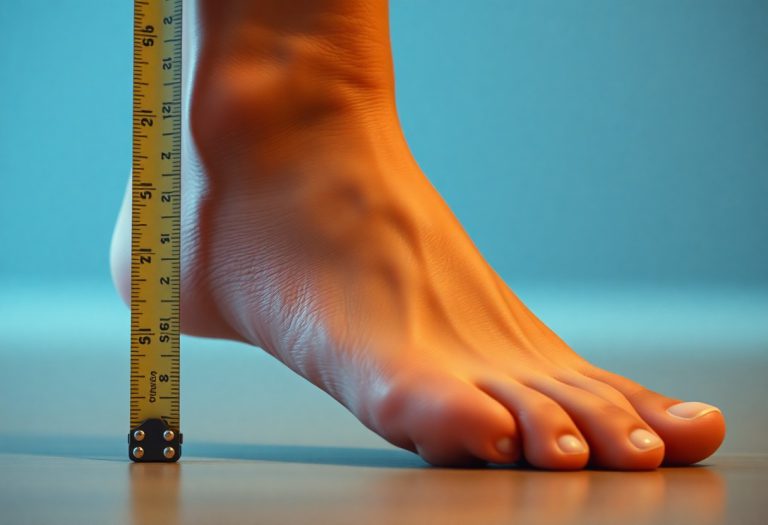Persistent foot discomfort and difficulties in finding properly fitting shoes are common issues faced by many individuals. Understanding your foot width is essential for achieving optimal foot health. Symptoms often include discomfort from pressure points on the sides of your feet, shoes that feel excessively tight despite being the correct length, and recurrent blisters along the edges of your feet. It is crucial to have shoes that fit appropriately, and the first step in this journey is accurately determining your foot width. This detailed guide will empower you to assess whether you have wide feet by utilizing simple at-home methods, allowing you to make informed and comfortable shoe choices that help prevent potential foot complications.
Understanding Wide Feet: Explore the Condition and Its Effects on Your Comfort
For many people, having wide feet represents a natural variation in foot structure. Attributes such as bone density, muscle makeup, and the distribution of soft tissue all play a role in forming a wider foot profile. By gaining a deeper understanding of this condition, you can make more informed choices about footwear that promotes proper foot health. Having wide feet can significantly influence your overall mobility, comfort, and posture, which underscores the importance of selecting shoes that are designed specifically to accommodate your unique foot shape.
Uncover the Genetic Factors Influencing Your Foot Width
Your genetic background is a key determinant of your foot width. You inherit numerous traits from your parents, including those related to bone structure and arch height. Research indicates that approximately 60% of the variations found in foot width can be attributed to genetic factors. This hereditary influence shapes both the size and shape of your feet from an early age, making it essential to consider these traits when choosing the most suitable footwear for your needs.
Assessing How Lifestyle Choices and Environment Affect Foot Width
Contrary to popular belief, your daily habits and lifestyle choices can significantly influence your foot width over time. Several key factors contribute to this gradual change, including:
- Prolonged standing
- Weight fluctuations
- Inappropriate footwear choices
- Physical activities
Each of these elements can result in subtle widening of the foot, emphasizing the necessity of evaluating your daily activities and lifestyle choices in relation to your foot health. Consider how various daily activities and lifestyle factors can profoundly influence your foot width:
- High-impact physical exercises
- Pregnancy and related changes
- Aging effects on foot structure
- Medical conditions affecting the feet
These factors require careful attention to foot care and the selection of suitable footwear to ensure comfort and support catered to your unique foot shape.

Proven Strategies for Accurate Measurement of Your Foot Width
Determining your foot width can be accomplished through two primary methods: professional assessments and at-home techniques. Obtaining precise measurements is critical for finding shoes that provide comfort and prevent foot-related issues. To ensure a proper fit, it’s important to measure your foot width at its widest point, which is usually across the ball of your foot.
Leverage Professional Shoe Fitting Assessments for Accurate Results
Experts in professional shoe fitting utilize tools such as the Brannock Device to provide precise measurements of both length and width. This method ensures accuracy and can identify specific characteristics of your feet that influence the way shoes fit. Your foot width is then compared against standardized sizing charts employed by various shoe manufacturers to guarantee the most suitable fit for your unique foot shape.
Effortless At-Home Techniques for Measuring Your Foot Width
The best time to measure your feet is around midday, as they naturally expand throughout the day. To begin, gather a blank sheet of paper, a pencil, and a measuring tape or ruler. Stand on the paper to capture the most accurate measurements of your feet.
To conduct your at-home measurement, follow these steps: trace the outline of your foot while standing, measure the widest area of your foot, and compare your results against standard size charts. Don’t forget to measure both feet, as it’s common for one foot to be slightly larger than the other. For enhanced accuracy, measure across the ball of your foot and consider subtracting 1/8 inch from your final measurement.

Recognizing the Key Indicators of Wide Feet: Signs to Observe
Identifying wide feet often involves noticing several clear indicators. Pay attention to specific physical markers and any recurring discomfort you experience in your daily activities. Studies indicate that around 30% of individuals wear shoes that are the wrong width, often unaware that they have wide feet. Your foot width is closely linked to your overall foot health and comfort, making it essential to recognize and address any discrepancies.
Physical Signs That Suggest You May Have Wide Feet
To evaluate whether you have wide feet, carefully observe the appearance and behavior of your feet. Look for visible indications such as foot spillage over the sides of your shoes, indentations on your feet from tight footwear, and a splayed shape while standing. Ensure that your toes are able to move freely and that the ball of your foot fits comfortably without creating painful pressure points.
Everyday Discomfort Indicators to Monitor for Better Foot Health
Common discomfort indicators may manifest as frequent blisters on the sides of your feet, numbness in your toes, or ongoing discomfort caused by your shoes. You might also notice that your shoes stretch sideways over time or feel a sense of relief when you take them off. These symptoms often indicate that your footwear is too narrow for your foot width.
Recognizing these discomfort signals empowers you to make more informed decisions when selecting footwear. Neglecting these signs can lead to long-term foot issues, such as bunions and corns. Your shoes should provide adequate width from heel to toe, allowing for approximately a thumb’s width of space between your longest toe and the shoe’s tip. If you consistently experience pressure on the sides of your feet, consider seeking professional measurement for accuracy.
Utilizing a Comprehensive Width Chart for Finding Your Ideal Shoe Fit
Feet come in various shapes and sizes, and your foot width is just as crucial as its length when searching for the perfect pair of shoes. A width chart can assist you in correlating your foot measurements with the appropriate shoe width, typically ranging from AA (narrow) to EE (extra wide). Understanding these measurements can significantly enhance your overall shoe comfort.
Grasping Standard Foot Measurements for Enhanced Shoe Fitting
To achieve accurate foot measurements, ensure you are standing, as your feet naturally spread under your body weight. Measure your foot width at the widest part of your foot, which is generally across the ball. For women, a standard width (B) ranges from 3.4 to 3.6 inches, while for men, a standard width (D) typically falls between 3.8 to 4.0 inches.
Understanding the Variations in Shoe Width Sizes
Width size variations can differ by as much as 1/4 inch between letter categories (A, B, D, E). Your feet may require different widths based on their unique shapes, and it is not unusual to have one foot slightly wider than the other. Always prioritize fitting shoes to your wider foot to ensure optimal comfort.
Considering the natural fluctuations in foot size throughout the day, it is advisable to measure your feet in the afternoon or evening when they are at their largest. Your foot width can also be affected by factors such as weight changes, pregnancy, or aging, making regular measurements essential for proper shoe fitting.
Reflecting on Your Shoe-Fitting Experiences: Insights for Better Fit
Your past experiences with shoe fitting can provide valuable insights into your foot width. If you frequently experience discomfort at the sides of your shoes or find yourself needing to size up just to accommodate width, these indicators are significant. Many individuals with wide feet report needing to purchase shoes that are 1-2 sizes larger than their actual foot length to meet their width requirements.
Evaluating Your Current Footwear for Width Compatibility
It is essential to assess your current shoes for their width compatibility. Stand on a piece of paper and trace the outline of your foot. If you notice that your foot spills over the sole of your shoe when compared to this tracing, it is likely that you have wide feet. This simple test can help prevent future foot complications and guide you toward more suitable shoe options.
Identifying Pressure Points in Your Footwear for Enhanced Comfort
Approximately 72% of individuals wear improperly sized shoes, leading to uncomfortable pressure points. You can identify these pressure points by examining areas where your current shoes show excessive wear patterns or where redness appears on your feet after extended wear.
It is crucial to recognize that persistent pressure points can lead to long-term foot complications if not addressed. Regularly monitor areas where your shoes feel tight, particularly across the ball of your foot and the sides. This awareness can help prevent painful conditions like bunions and corns. Quick relief from pressure indicates that your shoes may be too narrow, suggesting it may be time to explore wide-width options.

Optimal Timing for Accurate Foot Measurements
For reliable results, accurate foot measurements should be taken at specific times during the day. Your feet naturally change size due to physical activity and fluid retention. Consistent timing for measurements will yield trustworthy shoe sizing data.
Morning Measurements for Establishing Your Baseline Width
To determine your baseline foot width, measure your feet first thing in the morning. After a night of rest, your feet are typically at their smallest size, providing a measurement that reflects the minimum width necessary for comfortable footwear.
Evening Measurements for Ensuring Optimal Shoe Fit
Before making any shoe purchases, measure your feet in the evening when they are likely to be at their largest size. Your feet can expand by up to 8% throughout the day due to walking and standing, which is a critical factor to consider in order to ensure a comfortable fit.
Additionally, it’s important to remember that your evening measurements may be up to half a size larger than your morning measurements. This size discrepancy reinforces the importance of always selecting shoes based on your evening foot measurements to avoid discomfort and potential foot health issues.
Key Takeaways for Understanding Your Foot Width
Determining whether you have wide feet involves straightforward steps that can be accomplished at home or through professional assistance. Your foot measurements, comfort levels in shoes, and visible signs such as bulging sides can all provide valuable insights into whether you need wide-width footwear. Measure your feet with a ruler, check for red marks after wearing shoes, or consult a shoe store for professional sizing. By gaining a clear understanding of your foot width, you can choose shoes that fit better, thereby preventing discomfort and potential foot issues. Making educated decisions about your footwear based on these indicators will help ensure your feet remain healthy and comfortable.
Addressing Common Inquiries About Foot Width
Q: How can I accurately measure my foot width at home?
A: Begin by placing a blank sheet of paper on a flat surface, stepping onto it with your bare foot to trace the outline. Measure the widest part of the outline using a ruler. Conduct this measurement for both feet in the evening when they are at their largest. A width greater than 4 inches for men or 3.5 inches for women generally indicates wide feet.
Q: What physical signs suggest that I might have wide feet?
A: Look for these clear indicators: cramped toes in regular-width shoes, red marks on the sides of your feet following shoe wear, shoes that stretch sideways over time, or pressure on the sides of your feet. All these symptoms suggest your shoes may be too narrow for your foot width.
Q: Is the wet foot test a reliable method for checking for wide feet?
A: Yes, the wet foot test is a valid approach. Wet your bare foot and step onto a brown paper bag or dark surface. If your footprint reveals a broad middle section that occupies most of the print’s width, it is likely that you have wide feet. Compare your footprint width with standard size charts available online or in shoe stores to confirm your foot width classification.
The Article How to Determine If You Have Wide Feet: Simple Methods and Signs to Check appeared first on My Shoes Finder
The Article Wide Feet: Simple Methods and Signs to Check Your Size Was Found On https://limitsofstrategy.com
References:
Wide Feet: Simple Methods and Signs to Check Your Size





Your insights into foot discomfort and the importance of understanding foot width resonate deeply with me. Having struggled with finding shoes that accommodate my wide feet for years, I recognize how essential it is to prioritize proper fit for long-term foot health. It’s fascinating how a seemingly small detail like foot width can have such a significant impact on overall comfort and mobility.
I completely relate to your experience with foot discomfort and the challenges of finding the right shoes. It’s surprising how much something like foot width can influence not just comfort, but also our daily activities. I’ve often found myself in the same boat, scouring stores for shoes that not only fit well but also look good.
I hear you loud and clear on the struggle with foot discomfort and the never-ending hunt for shoes that check all the boxes. It’s wild how something like foot width can flip your whole day upside down. The shoe industry often seems to forget that not everyone’s feet are the same. One store’s “wide” could feel more like a “medium” in another shop, and finding that sweet spot between comfort and style can feel like a quest in itself.